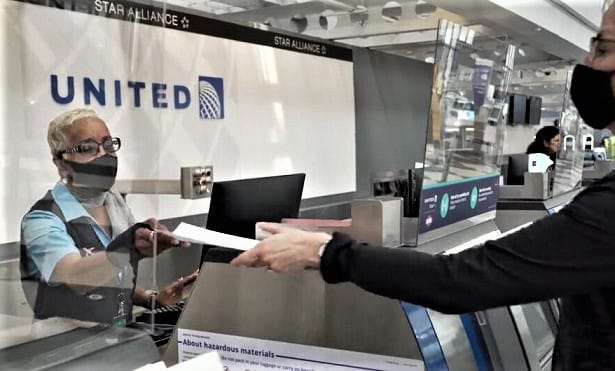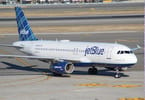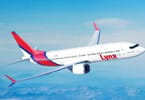Today, United Airlines informed operations leaders that half of the airline’s entire staff would be receiving notices of involuntary furloughs. Unfortunately the airline’s announcement just 3 weeks ago that it expects to have total available liquidity of approximately $17 billion at the end of the third quarter of 2020 does not appear to have come to fruition or is simply not enough to keep the airline afloat without additional cost-cutting measures.
With this furlough announcement, it is important to note that there is a difference between a furlough and a layoff. Layoffs are when employers terminate an employee for reasons other than an employee’s actual performance. They can be permanent or temporary. Furloughs, in general, are more defined. Furloughed employees can hope to return to work and retain access to benefits. Furloughed workers are technically still employees.
Throughout United’s communication, the potential action is referred to as a furlough. Nowhere is the word layoff used. So, it should be safe to assume that given an upswing back in air travel, the airline would be more than happy to bring its employees back to work if they have been furloughed.
Below is the official communication from United:
After months of aggressive cost-cutting and proactive capital-raising, today we updated employees about a topic we’ve always dreaded and the action that was always a last resort in the context of this COVID-19 pandemic: involuntary furloughs.
This morning, each of our operations leaders communicated directly with their teams to let them know that about 36,000 United frontline employees will be notified, either directly or through a union representative, of potential furloughs on October 1, under the Worker Adjustment and Retraining Notification Act (WARN). To better understand what WARN notices are and why companies like United must issue them, the Act requires most employers with 100 or more employees to provide notification 60 calendar days in advance of plant closings and mass layoffs. Each leader also shared the number of potentially impacted employees in their specific workgroup. An approximate breakdown of those numbers is also included below.
Importantly, not everyone who receives a WARN notice will be furloughed.
We expect to offset these numbers through increased participation in new and existing voluntary programs as well as continued discussions with our union partners about creative ways to help reduce furloughs.
Our primary goal throughout this crisis has been to ensure United – and the jobs it supports – are here when customers are flying again. In our March 10 all-employee townhall, Scott Kirby underscored this point by saying, “… our number one overriding priority and objective is to make sure we get the company through the crisis and through to the other side. That is by far the number one objective. And the second objective is to do that without any involuntary furloughs…I can’t promise that it won’t get bad enough that we’ll have to do that. I will tell you if it gets to the point where waiting to do that jeopardizes number one, which is making sure your jobs are here for the next 10 to 20 years, we’ll reluctantly do it. But those are our two objectives as we go through this.”
Sizing our airline with customer demand
Throughout this crisis, we have been honest and direct with you about our need to right-size our workforce to match travel demand. For months, we have said that our airline, and our overall workforce, needed to be smaller than it is today, starting as early as October 1.
While demand has trended slightly upward from its April low, our July scheduled capacity is expected to be down 75% compared to last year and we expect August scheduled capacity to be down 65% compared to last year. And now, given the recent resurgence of COVID-19 cases across the country, it’s increasingly likely that travel demand will not return to normal until there is a widely available treatment or vaccine.
The reality is that United simply cannot continue at our current payroll level past October 1 in an environment where travel demand is so depressed. And involuntary furloughs come as a last resort, after months of company-wide cost-cutting and capital-raising.
Managing through this crisis
We are living through the most disruptive financial crisis in the history of commercial aviation. And since the early days of this global pandemic, we’ve taken bold steps to try and stay a step ahead of COVID-19’s devastating impact on travel demand.
Given our large international network, we were among the first businesses to directly feel the impact of COVID-19 and we acted immediately. We started aggressively cutting costs across our business in late February, including:
- Suspended our share repurchase program in February and terminated it in April
- Reduced planned full-year adjusted capital expenditures by approximately $2.5 billion
- Eliminated CEO and President base salaries through the end of 2020 and temporarily reduced Officer salaries
- Suspended raises and implemented a schedule reduction for management and administrative employees
- Slashed our domestic and international schedules
- Instituted a hiring freeze for non-essential workers
- Slashed spending on vendors and outside contractors
- And offered voluntary unpaid leaves of absence for U.S.-based employees — with more than 20,000 employees now participating
But cutting costs was not enough. We needed to simultaneously borrow money, boost liquidity and secure funding from the federal government. Almost all of this money must be repaid and our capital-raising initiatives include:
- $4.0 billion of liquidity from three secured term loan facilities, new aircraft financings and an equity offering
- $6.8 billion in financing secured by MileagePlus
- $4.5 billion available through the Coronavirus Aid, Relief, and Economic Security Act (“CARES Act”) Loan Program
- $5.0 billion from the federal government through the Payroll Support Program under the CARES Act
This combination of cost-cutting and capital-raising has been essential to our survival as a company and importantly, has delayed involuntary furloughs until now.
Voluntary programs
The contributions of thousands of our fellow team members who have already participated in voluntary leaves and reduced hour programs have made a big difference. We recently extended the signup deadline for VSP2 for select frontline employees to July 15.
Again, we remain hopeful that the number of people who are actually furloughed on October 1 is far less than the numbers referenced in the messages today. And we’ll continue to explore ways to help reduce the number of involuntary furloughs overall.
As each of our operations leaders shared in today’s email messages to their teams, we understand the impact that today’s update will have on many of our colleagues and their families. And as a result, we did not take this action lightly. We are only pursuing this option as a last resort to ensure we have a much stronger airline for people to return to in the future.
Below is a complete breakdown of the approximate 35,902 number of potential furloughs on October 1, by frontline work groups:
Inflight Services – 15,100
Airport Operations – 11,082
Technical Operations – 5,457
Flight Operations – 2,250
Contact Centers – 983
Catering Operations – 808
Network Operations Center (NOC) – 222
#rebuildingtravel
WHAT TO TAKE AWAY FROM THIS ARTICLE:
- Unfortunately the airline's announcement just 3 weeks ago that it expects to have total available liquidity of approximately $17 billion at the end of the third quarter of 2020 does not appear to have come to fruition or is simply not enough to keep the airline afloat without additional cost-cutting measures.
- I will tell you if it gets to the point where waiting to do that jeopardizes number one, which is making sure your jobs are here for the next 10 to 20 years, we’ll reluctantly do it.
- With this furlough announcement, it is important to note that there is a difference between a furlough and a layoff.






















